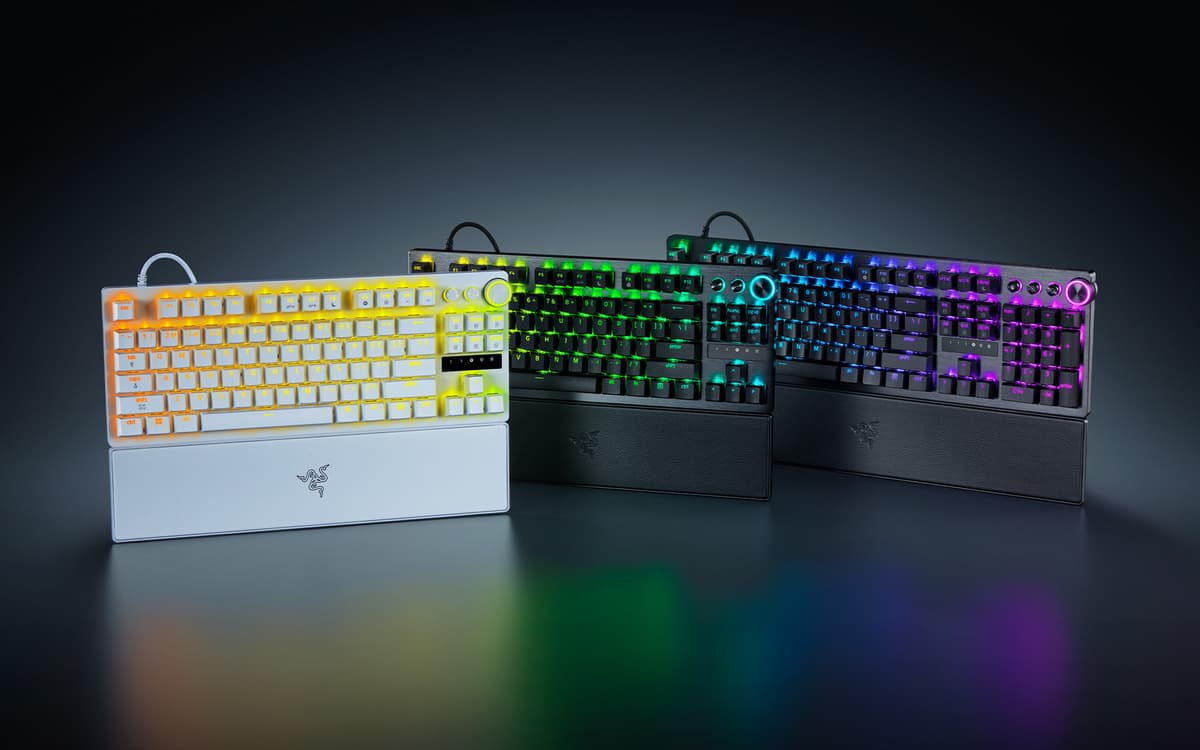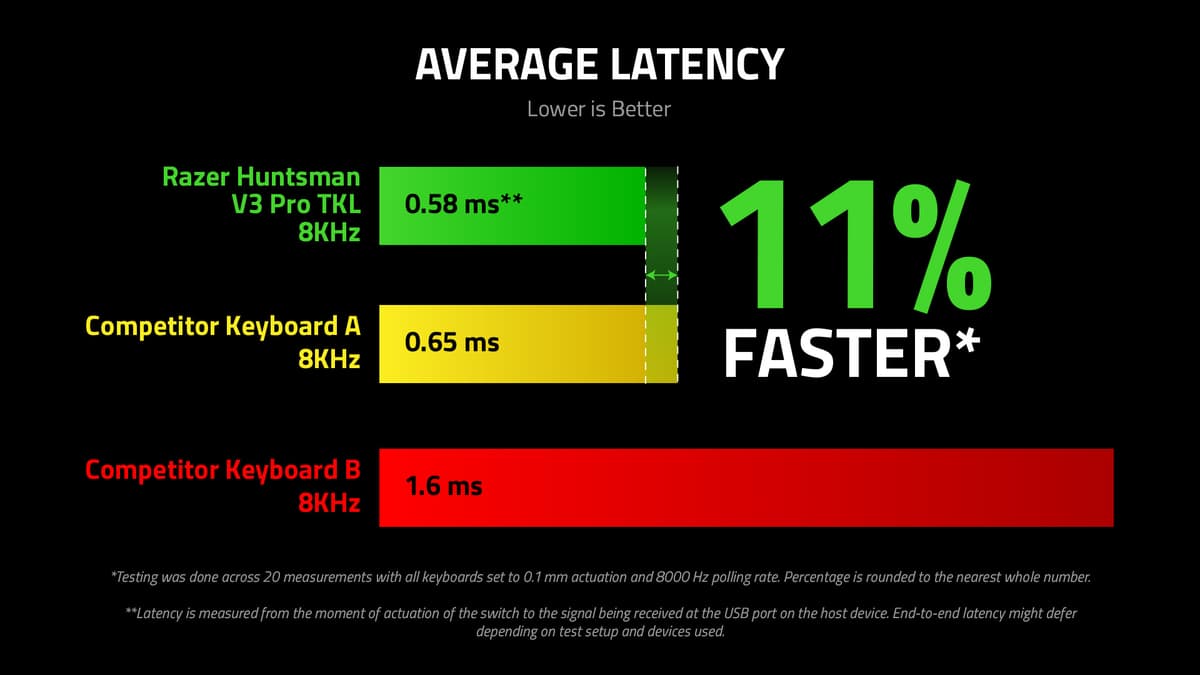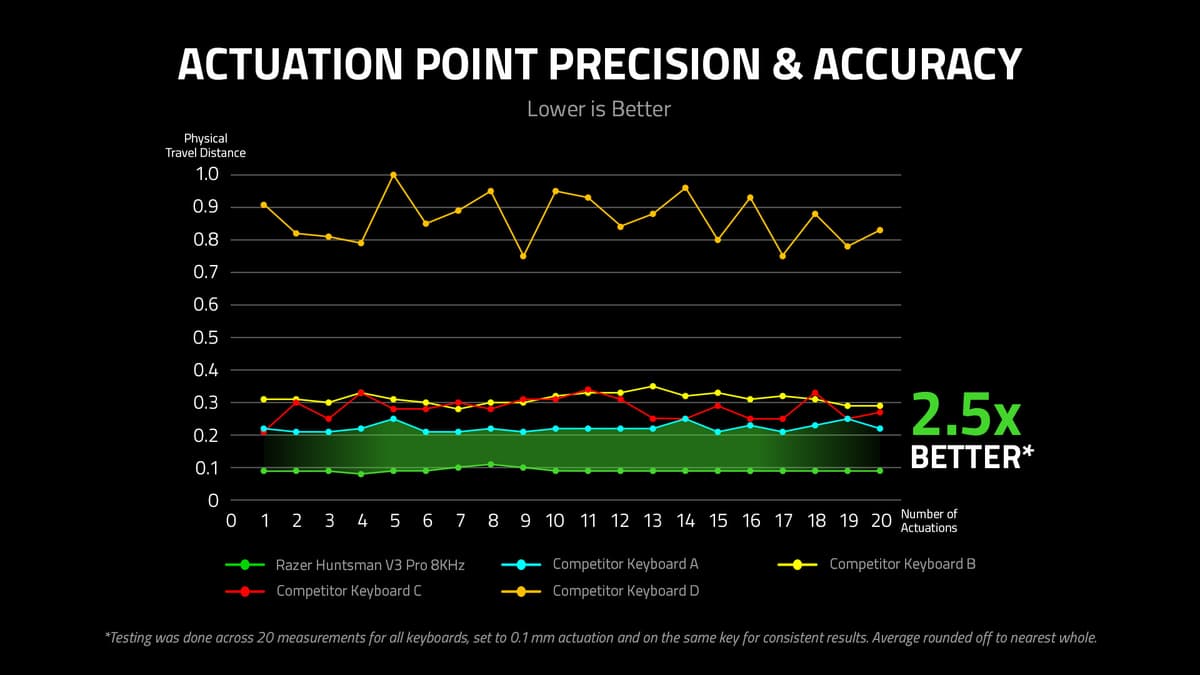
This one caught my attention because Razer isn’t just slapping RGB on another Huntsman and calling it a day. The Huntsman V3 Pro 8KHz and its Tenkeyless 8KHz sibling lean hard into the “every millisecond matters” arms race: Gen‑2 Analog Optical switches, true 8000 Hz polling, Rapid Trigger, and a new “Snap Tap” mechanic aimed squarely at CS2 and Valorant players. The question is whether these features translate into real wins, or just prettier graphs.
Razer’s framing this as its fastest esports keyboard yet, co-signed by pros like NiKo. On paper, the spec sheet is stacked: true 8000 Hz HyperPolling, factory-calibrated analog optical switches with 0.1 mm granularity, Rapid Trigger, and a Snap Tap function to instantly switch directional priority. The boards are wired, built into a 5052 aluminum top case with sound-dampening foam, pre-lubed stabilizers, PBT keycaps, and a magnetic wrist rest. There’s a clickable media dial, dedicated buttons, and the rare win of hardware-level actuation and Rapid Trigger adjustments with onboard memory-so you don’t need Synapse running at a LAN.
Pricing lands at $249.99 for the full-size, $219.99 for the TKL, $229.99 for the TKL White, and $249.99 for the TKL “Esports Green” edition. That puts it up against heavy hitters like Wooting’s analog boards, SteelSeries Apex Pro, and Corsair’s Hall effect options. Razer’s pitch is simple: less latency, more control, pro-ready durability.
Short answer: it can, but it’s not magic. Keyboard input latency isn’t just polling—it’s OS scheduling, USB stack, game engine input processing, and your frame time. 8000 Hz takes the USB poll interval to 0.125 ms, which helps the “first byte” of a keypress arrive faster. Razer quotes ~0.58 ms from actuation to USB port, which is extremely fast. But the real-world advantage shrinks if you’re not also pushing high, stable FPS and a low-latency display pipeline.

There’s also a small CPU overhead with 8K polling. It’s usually tolerable, but on older rigs or when streaming, you may prefer 1000-4000 Hz if frame pacing gets messy. The nice part: the keyboards let you toggle this stuff on-device, so you can dial in a sweet spot per game without a software rabbit hole.
Forget the headline latency number for a second—the switch tech is where the gameplay benefits live. Razer’s Gen‑2 Analog Optical switches allow you to set actuation anywhere from 0.1 to 4.0 mm. That means you can make WASD feather-light for instant strafes or give your spacebar a deeper throw to avoid accidental jumps. Rapid Trigger resets the key as soon as you lift, rather than waiting to cross a fixed reset point. In practice, that’s cleaner counter-strafing and fast directional feints—exactly why Wooting’s rapid-trigger style became a meta pick in Valorant.
Snap Tap is Razer’s twist: the keyboard prioritizes the latest directional key you press, even if you haven’t fully released the previous one. For A/D dancing, it reduces the mushy overlap moment and makes direction swaps feel crisp. It’s the kind of firmware-level behavior you notice immediately in CS2 peeks or jiggle strafes. Will it win you a LAN? Not by itself. But it makes consistency easier, which is what pros actually chase.

One caveat: while these are “analog” switches, most games still treat keyboards as digital on/off outside of specific integrations. The real win isn’t analog steering—it’s fine-grained actuation and ultra-fast resets. That’s universally useful across shooters and rhythm games, and even in MOBAs for rapid ability sequencing.
Razer’s Huntsman line has bounced between “blazing fast” and “a bit harsh-sounding.” The V3 Pro’s foam, pre-lubed stabs, and PBT caps should help the acoustics, and the aluminum top plate gives it a sturdier feel than the earlier, ping-prone boards. The TKL option makes sense for low-sens players who want more mouse room, and the onboard LED readout for actuation/Rapid Trigger tuning is a smart quality-of-life touch. Tournament players will appreciate profile storage without mandatory software—but always check your event rules for features like Rapid Trigger and custom actuation. Most organizers are fine with hardware-level behavior, but policies vary.
Value-wise, this is premium territory. If you’re already on a rapid-trigger keyboard, the jump to 8K polling alone won’t transform your gameplay. If you’re coming from a standard mechanical without per-key actuation or Rapid Trigger, the difference is instantly noticeable. Between the full-size and TKL, the Tenkeyless is the sweet spot for most FPS players unless you desperately need the numpad for work macros.

I’ve tested enough “esports” keyboards to know when the marketing oversells the benefit. Here, the measurable stuff lines up with how modern FPS is played. Rapid Trigger plus 0.1 mm actuation matters far more than the raw 8K number, and Snap Tap feels like a practical, gamer-brain feature rather than a lab trick. The rest—better stabs, foam, PBT—finally makes a Huntsman that sounds and feels competitive with the boutique scene, not just fast on a scope.
Razer’s Huntsman V3 Pro 8KHz is built for players who care about every input frame. Rapid Trigger, adjustable 0.1–4.0 mm actuation, and Snap Tap are the real upgrades; 8K polling is a nice-to-have. If you’re grinding CS2 or Valorant and you want a pro-ready TKL with legit on-board controls, this is a serious contender—just be ready to pay pro prices.
Get access to exclusive strategies, hidden tips, and pro-level insights that we don't share publicly.
Ultimate Gaming Strategy Guide + Weekly Pro Tips